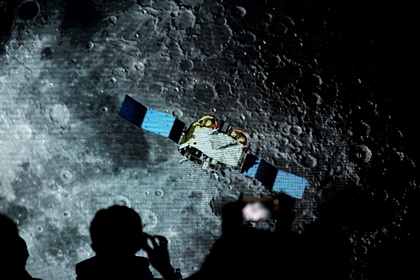Scientists from China, Germany and the USA found fragments with an "exotic" chemical composition in the samples of lunar soil delivered by the Chang'e 5 spacecraft. Scientists presented the results of the preliminary soil analysis at the European Congress on Planetary Sciences.
The samples delivered in December 2020 are the youngest ever delivered from the Moon for laboratory analysis: the age of the geological area where the spacecraft landed does not exceed two billion years. 90 percent of the 1.7 kilograms of soil collected by the device most likely originate from the place of its landing on the Earth's satellite - Rümker Peak - and represent lunar marine basalt - "dark" areas of the surface visible from our planet. Among the remaining ten percent are the remains of meteorites and balls of volcanic glass, scientists from the Chinese Geological University say.
Together with colleagues from the Brown and Westphalian Universities, they studied granular inclusions and found that they are identical in composition to materials from the Miran and Sharp canyons - located 230 and 160 kilometers from the site of the lunar mouths of ancient extinct volcanoes. The young age of the rocks also made it possible to narrow down the search for impact craters from which meteorite fragments originate — it turned out that most of them originate from the Harpal crater. Some of the fragments could have been brought to the landing site of the module from a distance of 1300 kilometers.
The Chang'e 5 mission was the first Chinese lunar mission to be returned and the first in 44 years - since the Soviet Luna—24 in 1976 - to deliver samples of lunar soil to Earth. China has become the third country to do this - after the USSR and the USA
Dmitry Yuryev

